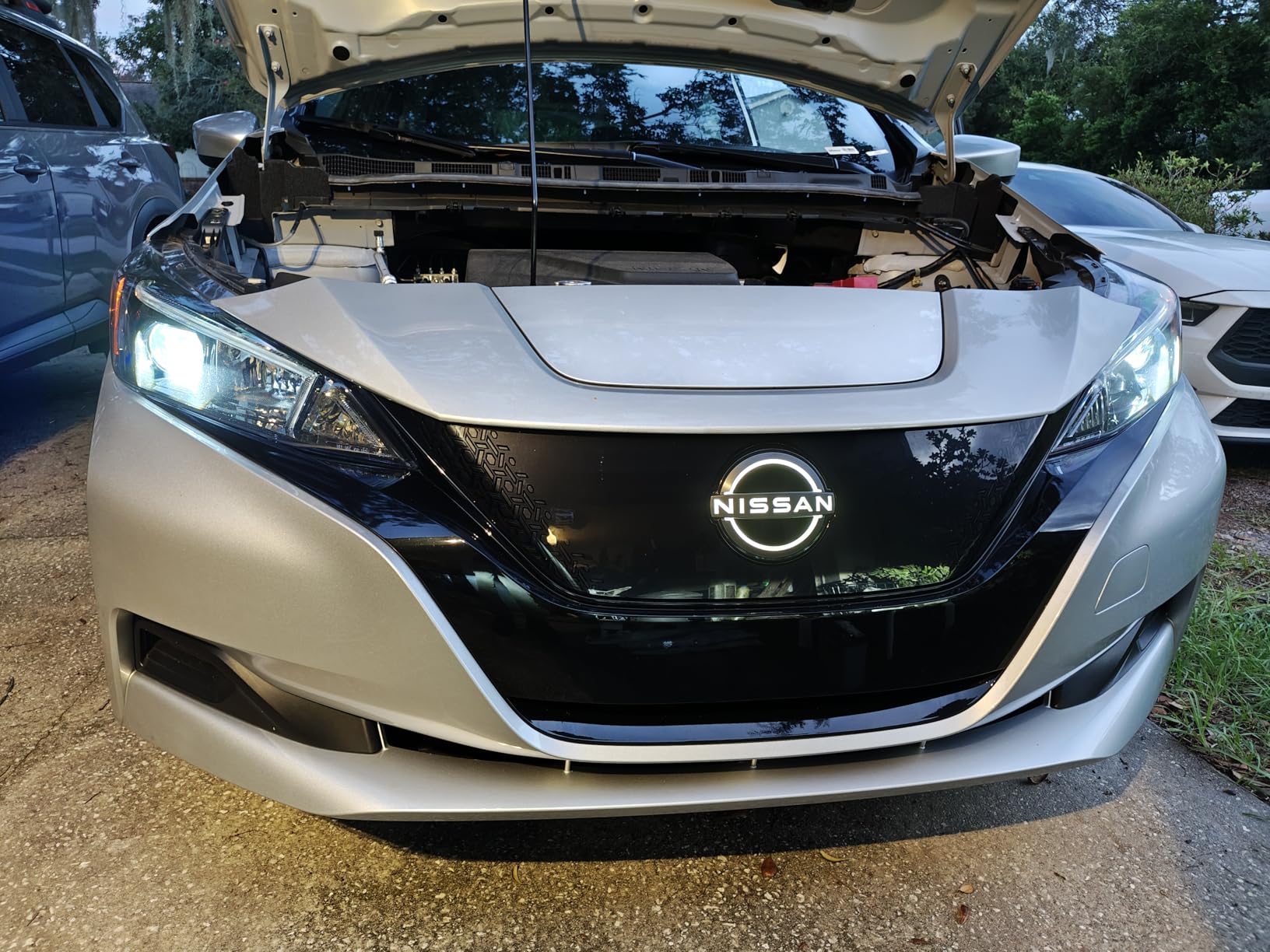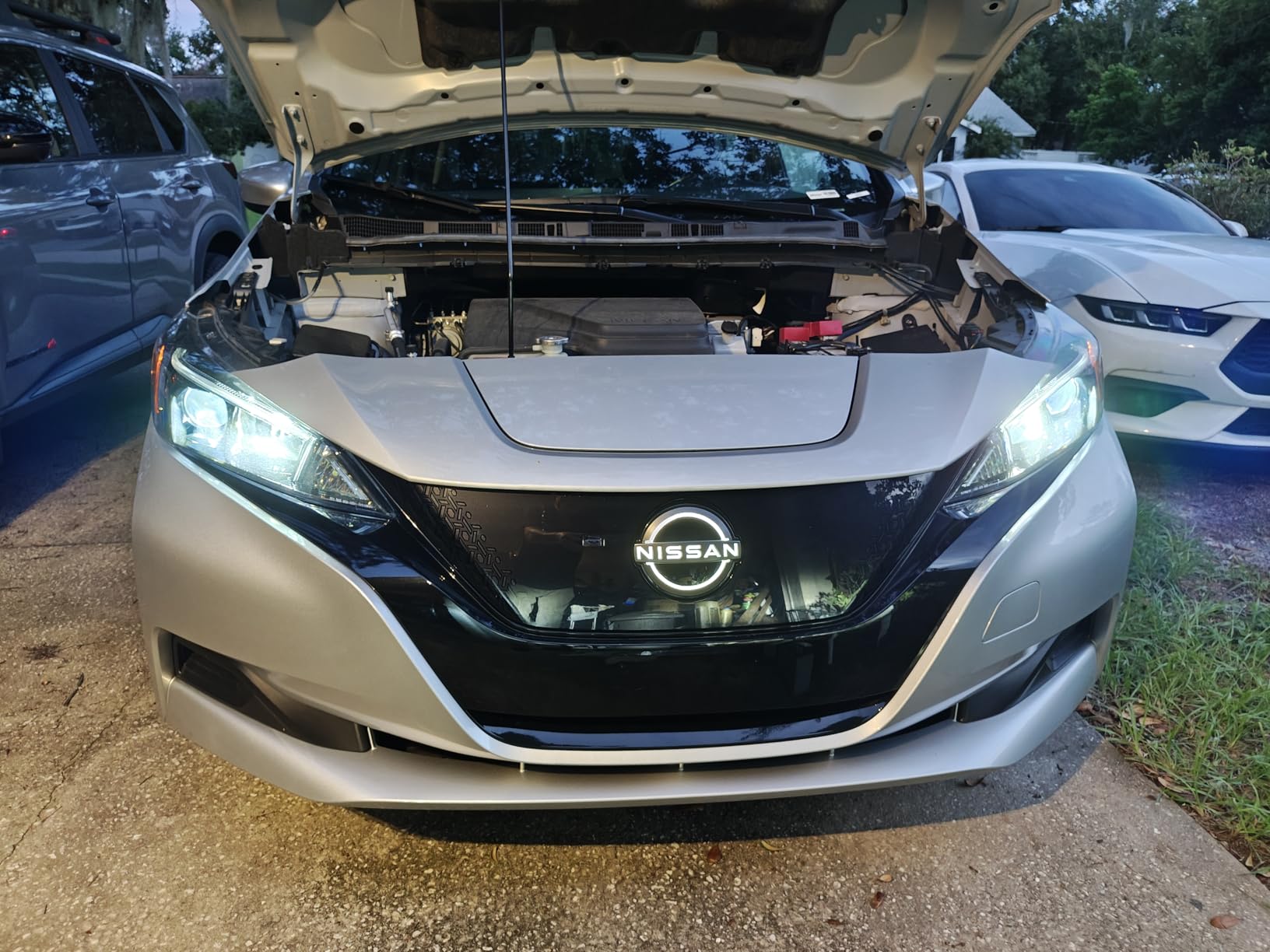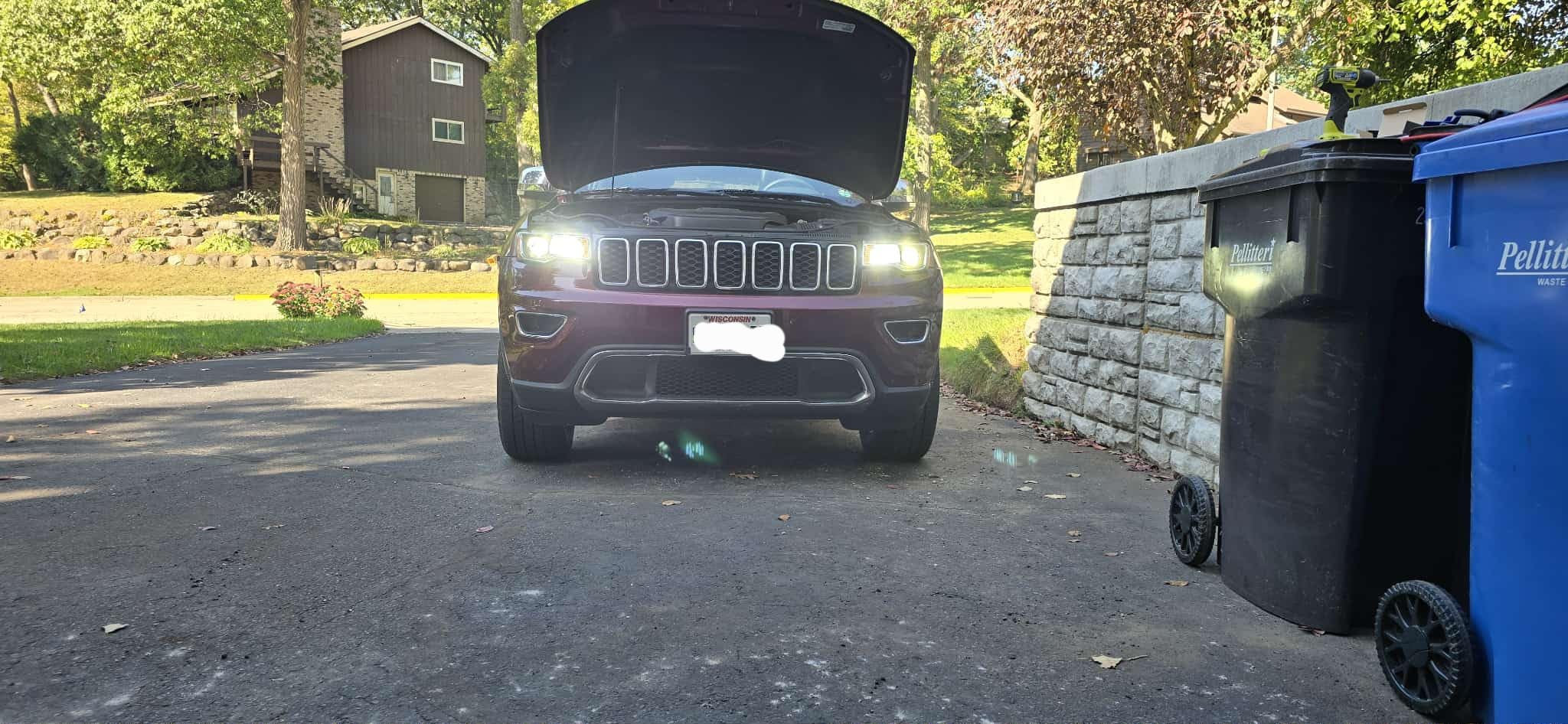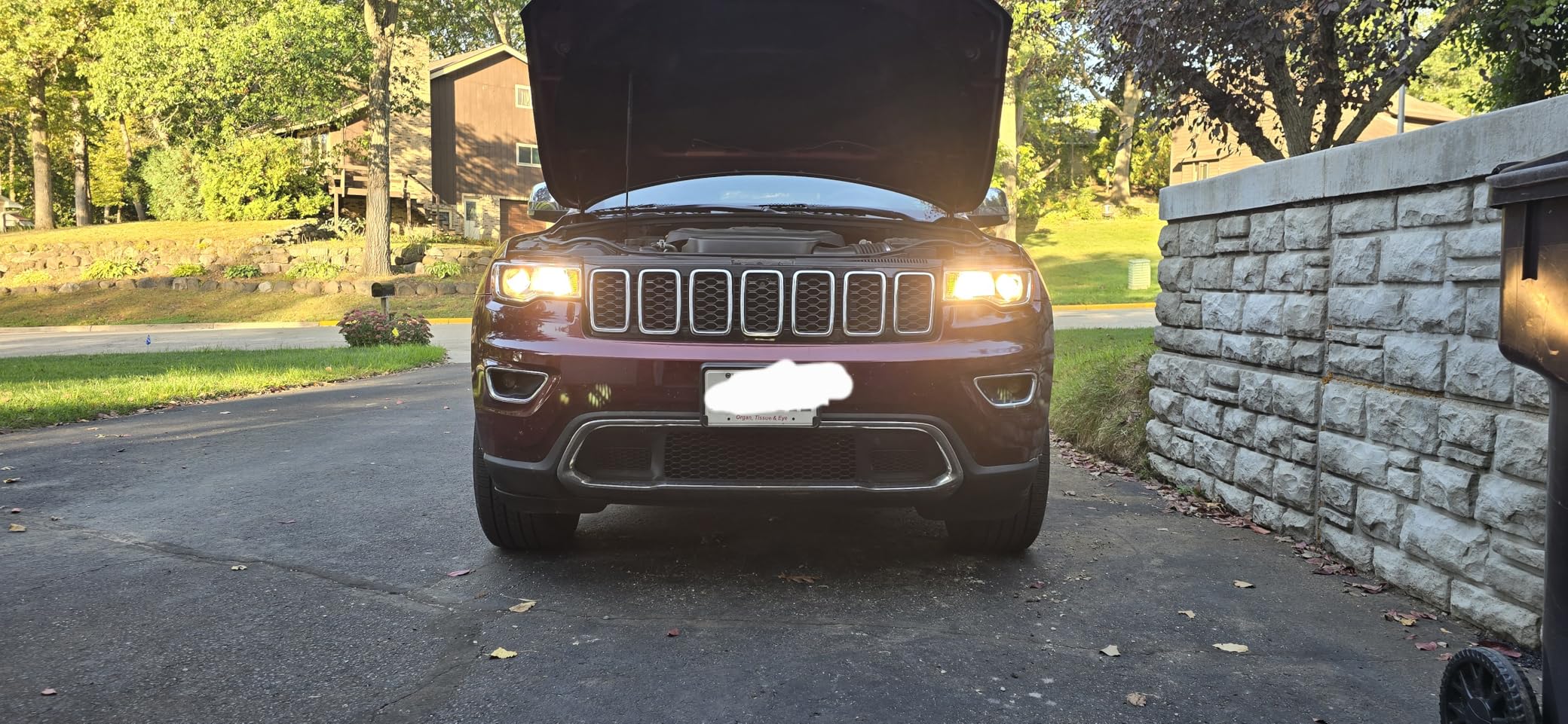Quick Answer:
Yes, you can add fog lights to most cars even if they didn't come with them originally - many car makers actually plan for this upgrade. You'll need to check if your car is compatible, buy the right fog light kit, and then mount the lights and connect the wiring, which typically costs $50-200 and takes about 3-6 hours for most people. Just make sure to check your state's laws about fog lights before you start the installation.
Introduction
Have you ever been driving through thick fog or heavy rain and thought "I really wish I had fog lights right now"? You're not alone - many drivers end up wanting fog lights after buying a car that didn't come with them from the factory. Those moments when visibility drops to almost nothing can make you realize just how valuable these lights can be for safe driving. The answer to whether you can install fog lights on your car is usually yes, even if your vehicle wasn't originally equipped with them. Most cars can handle a fog light upgrade with the right kit and some planning, but there are definitely some things you'll want to know about compatibility, wiring, and regulations before you start your fog light installation project.

Why Should You Consider Adding Fog Lights to Your Car?
Before you start shopping for fog light kits or planning an installation, it's important to understand what fog lights actually do and why they might be worth adding to your vehicle. Many drivers think fog lights are just extra bright lights, but they work very differently from your regular headlights and serve a specific safety purpose. Knowing the real benefits and how these lights function will help you decide if installing them makes sense for your driving situation.
5 Benefits You Get from Fog Lights
Adding fog lights to your car provides several practical safety advantages, especially during bad weather conditions:
- Better road visibility in fog - These lights help you see the road surface and lane markings when thick fog makes regular headlights useless.
- Improved visibility in heavy rain - Fog lights illuminate road edges and help you stay in your lane when rain reduces visibility significantly.
- Increased safety in snow - The low beam pattern works well in falling snow without creating glare that blinds you.
- Other drivers see you better - Your vehicle becomes more visible to other drivers during poor weather conditions, reducing accident risk.
- Less eye strain during bad weather - Unlike high beams that reflect back and cause glare, fog lights reduce the strain on your eyes.
How These Lights Work Differently
Fog lights use a completely different approach compared to your regular headlights to be effective in poor weather:
- Low mounting position - They're installed low on your vehicle, usually in the front bumper area, so the light beam stays below most fog and bad weather.
- Wide horizontal beam pattern - Instead of projecting light forward and upward like headlights, fog lights create a wide, flat beam that spreads across the road.
- Prevents light reflection - This beam design stops light from bouncing off water droplets, snow, or fog particles back into your eyes.
- Different bulb types available - Most fog lights use halogen, LED, or HID bulbs, with LED becoming more popular because they're brighter and last longer.
- Specific beam angle - The lights are angled to illuminate the road surface without creating the glare problems you get when using high beams in fog.

Can Your Car Handle an Upgrade?
Yes, most cars can handle a fog light upgrade, but compatibility depends on several specific factors about your vehicle. The good news is that many manufacturers design their cars with fog light installation in mind, even on base models that don't come with them from the factory. However, you'll need to check a few key things about your specific car before buying parts or starting the installation process.
Checking Vehicle Compatibility
Before buying any fog light kit, you need to make sure your car can actually handle the installation. Here's what to check:
1. Look at your front bumper - Check for pre-cut slots, blank panels, or obvious mounting points where fog lights would go
2. Check your owner's manual - See if fog lights were available as a factory option for your year, make, and model
3. Contact your dealership - They can tell you if your car has the necessary mounting points and wiring infrastructure
4. Examine the electrical system - Most modern cars can handle the extra power, but older vehicles might need electrical upgrades
5. Check space behind the bumper - Make sure there's enough room for fog light housings without interfering with other parts
Factory Wiring: A Hidden Gem?
Many cars without fog lights still have some wiring already installed at the factory, which can make your job much easier:
Signs your car might have pre-wiring:
- Unused connectors near the front bumper area
- Empty fuse box slots labeled for fog lights
- Fog light switch installed but not connected to anything
- Wiring harnesses with extra unused connections
How to find out for sure:
- Check online forums for your specific car model
- Ask your dealership's service department
- Have an automotive electrician inspect your car's wiring
If your car has factory pre-wiring, you might only need to install the actual lights and housings instead of running completely new wires. This can save you several hours of work and reduce your total project cost significantly.
How Do You Install Fog Lights on Your Car?
Installing fog lights might seem complicated, but it's actually a straightforward process when you break it down into manageable steps. The most important thing is to plan ahead and take your time with each part of the installation. While every car is a bit different and fog light kits vary, the basic steps are pretty much the same whether you're working on a Honda Civic or a Ford F-150.
Choosing the Right Fog Light Kit
Before you can start any actual installation work, you need to pick the right fog light kit for your specific situation. This decision will affect everything from how easy the installation is to how much you'll spend on the project.
| Kit Type | Cost | Installation Difficulty | Fitment | Pros | Cons |
| Universal Kit | $30-80 | Moderate-Hard | Requires modification | Cheap, works on most cars | More custom work needed |
| Vehicle-Specific Kit | $80-200 | Easy-Moderate | Perfect fit | Easy installation, better appearance | More expensive, limited options |
| Bulb Type | Initial Cost | Brightness | Lifespan | Power Draw | Best For |
| Halogen | $20-50 | Standard | 1-2 years | Higher | Budget builds |
| LED | $50-150 | Very bright | 5-10 years | Lower | Most installations |
| HID | $100-300 | Brightest | 3-5 years | Moderate | Performance vehicles |
Essential Tools for the Job
Once you've chosen your fog light kit, the next step is gathering all the tools you'll need for the installation. Having everything ready before you start will save you from frustrating trips to the hardware store in the middle of your project.
Basic Hand Tools:
- Screwdrivers (both flathead and Phillips head)
- Socket wrench set with various sizes
- Pliers (needle-nose and standard)
- Wire strippers and crimping tool
- Multimeter for testing electrical connections
Electrical Supplies:
- Electrical tape for securing connections
- Wire nuts or crimp connectors
- Extra wire if needed for custom routing
- Fuses (spare ones in case you blow any during installation)
Vehicle-Specific Tools:
- Drill with various drill bits (if cutting bumper holes)
- Hole saw for clean circular cuts
- Sandpaper and touch-up paint for cut edges
- Jack stands or ramps for safe vehicle lifting
- Safety glasses and work gloves
8 Steps Installation Guide
After preparing your kit and tools, you can now proceed to the actual installation. Read these steps consecutively to make sure that your fog lights are working and professional-looking after completing them.
1. Prepare your working environment - Pull over to level ground, engage the parking brake, and remove the car battery to prevent electrical shorting
2. Take out bumper panels - Take off any panels or covers blocking access to the mounting area for the fog lights, making sure to mark where all clips and screws are
3. Cut mounting holes (if needed) - If your car has no pre-drilled holes, measure and cut holes using the template from your kit
4. Install fog light housings - Insert lights into holes in the bumper and secure with provided brackets and hardware
5. Run wiring - Connect wires from each fog light to the engine compartment, avoiding contact with hot engine parts and moving components
6. Connect electricity - Connect the fog lights to the wiring harness, connect the power wire to the fuse box, and connect the switch as directed
7. Pre-final assembly testing - Reconnect battery and test lights to make sure everything is okay before re-fitting bumper panels
8. Reassemble and finish - Refit all panels taken out and clean up your workspace
3 Common Wiring Problems and Solutions
Even with careful planning, electrical issues can pop up during fog light installation. Don't worry though - most wiring problems have simple solutions once you know what to look for.
Blown Fuses:
- Check all connections for crossed wires or short circuits
- Verify positive and negative wires are connected correctly
- Use multimeter to test for continuity in problem areas
- Replace fuse only after fixing the root cause
Lights Won't Turn On:
- Confirm all connections are tight and properly crimped
- Test switch wiring according to kit instructions
- Check for voltage at each connection point with multimeter
- Verify fog light bulbs aren't burned out
Interference with Other Systems:
- Some cars with daytime running lights may need additional relays
- Modify wiring to work around conflicting electrical systems
- Consult vehicle-specific forums for known compatibility issues
- Consider professional help if electrical problems persist
Legal Lights: Staying on Right Side of Law
Installing fog lights isn't just about the technical aspects - you also need to follow legal requirements to avoid tickets or inspection failures. Fog light laws exist for safety reasons and vary between states, so it's important to understand what's allowed in your area before you start your installation.
Some USA Fog Light Regulations
Most states permit fog lights but have specific rules that you must follow for legal compliance:
- Color restrictions - Fog lights must be amber or white in most states, while red and blue colors are prohibited since they're reserved for emergency vehicles
- Height requirements - Lights must be mounted between 12-30 inches from the ground to meet legal standards
- Quantity limits - You're typically allowed a maximum of two fog lights on the front of your vehicle
- Usage conditions - Many states require fog lights to be used only during poor visibility conditions like fog, rain, or snow, not during clear weather. Understanding when you can legally use fog lights in non-foggy conditions varies by state law.
- High beam interaction - Some states require fog lights to automatically turn off when high beams are activated
Always check your specific state's vehicle code before installation to ensure full compliance.
Add Fog Lights to Your Car and Drive Safer
You can definitely install fog lights on your car with some planning and the right parts. Most vehicles work fine for this upgrade, especially if you check for existing wiring and pick a kit that fits your car. The installation takes some basic tools and electrical work, but it's manageable if you follow the steps and watch out for common wiring problems. Just make sure to check your state's laws about fog lights before you start. Whether you do it yourself or get help from a pro, fog lights will make driving much safer when the weather gets bad. Check if your car is ready for the upgrade and start looking at fog light kits that work with your budget.
8 FAQs About Fog Light Installation
Q1: How much does fog light installation cost?
Do-it-yourself installation costs $50-200 in materials plus your time, while professional installation costs another $100-300 in labor. Vehicle-specific kits cost more than universal kits, and LED lights cost more than halogen but last much longer.
Q2: How long does fog light installation take?
Most DIY installations will require 3-6 hours for a novice, but experienced DIYers will complete the installation in 2-3 hours. Professional shops will normally get it done in 1-2 hours as they have the proper tools and experience.
Q3: Will the installation of fog lights void my car warranty?
Properly installed aftermarket fog lights will not void your warranty, but any damage caused by an improper installation will likely not be covered. Keep all receipts and documentation, and seriously consider professional installation if your car is still under warranty.
Q4: Do fog lights drain your car battery?
Modern fog lights use minimal power and won't drain a good battery with the engine running. LED fog lights use less power than halogen fog lights. Only use fog lights when the engine is running to avoid draining the battery.
Q5: Can fog lights be used as daytime running lights?
Check your state laws first, as most states prohibit the usage of fog lights other than in low-visibility situations. It is legal in a few states, but running them continuously will shorten bulb life and distract other motorists.
Q6: What if I wire fog lights incorrectly?
Incorrect wiring can blow fuses, damage your car's electrical system, or even create fire hazards. Always follow the instructions in the kit to the letter, employ the right gauge wire, and test the connections with a multimeter before finishing the installation.
Q7: Do fog lights need special switches?
Most fog light kits include the necessary switch, but some cars have factory fog light switches that just need to be wired up. The switch must be rated for the electrical load of your fog lights in order to operate safely.
Q8: How often do fog light bulbs need to be replaced?
Halogen bulbs typically last 1-2 years with regular use, LED bulbs last 5-10 years, and HID bulbs typically last 3-5 years. Replacement frequency depends on how often you use the lights and on driving conditions.




